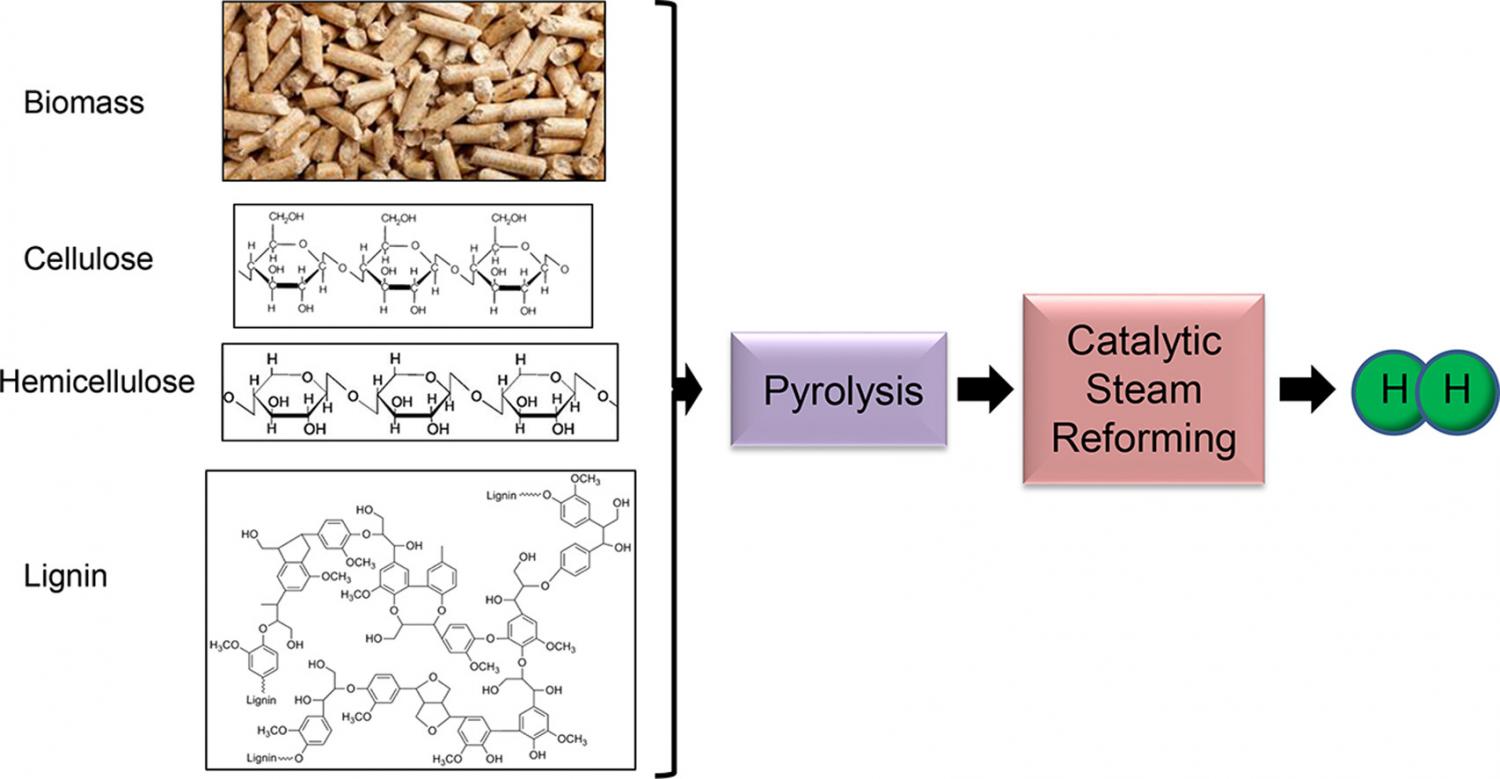
The pyrolysis-catalytic steam reforming of six agricultural biomass waste samples as well as the three main components of biomass was investigated in a two stage fixed bed reactor. Pyrolysis of the biomass took place in the first stage followed by catalytic steam reforming of the evolved pyrolysis gases in the second stage catalytic reactor. The waste biomass samples were, rice husk, coconut shell, sugarcane bagasse, palm kernel shell, cotton stalk and wheat straw and the biomass components were, cellulose, hemicellulose (xylan) and lignin. The catalyst used for steam reforming was a 10 wt.% nickel-based alumina catalyst (NiAl2O3). In addition, the thermal decomposition characteristics of the biomass wastes and biomass components were also determined using thermogravimetric analysis (TGA). The TGA results showed distinct peaks for the individual biomass components, which were also evident in the biomass waste samples reflecting the existence of the main biomass components in the biomass wastes. The results for the two-stage pyrolysis-catalytic steam reforming showed that introduction of steam and catalyst into the pyrolysis-catalytic steam reforming process significantly increased gas yield and syngas production notably hydrogen. For instance, hydrogen composition increased from 6.62 to 25.35 mmol g−1 by introducing steam and catalyst into the pyrolysis-catalytic steam reforming of palm kernel shell. Lignin produced the most hydrogen compared to cellulose and hemicellulose at 25.25 mmol g−1. The highest residual char production was observed with lignin which produced about 45 wt.% char, more than twice that of cellulose and hemicellulose.
